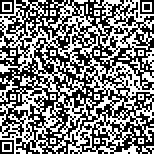下载中心
优秀审稿专家
优秀论文
相关链接
摘要

从估测干涉测量雷达数据相关性出发,通过利用欧洲资源卫星1号和2号获取的重轨干涉测量雷达数据,开展新疆喀什试验区地表土地类型的识别与分类,区分和识别出裸土,盐碱地,灌丛,裸岩/戈壁,沼泽和水体6类土地类型。并对不同土地类型的后向散射特性和相关性进行定量分析。探讨干涉测量数据相关性干旱-半干旱地区地表特征的关系,从而建立了干旱-半干旱地区地表变化的干涉测量时相关模型。为干旱-半干旱地区利用干涉测量数据进行地表变化监测提供理论依据。
The rapid development of economy and explosive growth of population have caused large decrease of water resources and vegetation coverage in the earth so that soil exhaustion, land desertification and salination become worse and worse, especially in arid to semi-arid area. It is very difficult to carry out the truth ground inventory and monitoring using the routine methods due to large and wide terrain and poor natural environments. Remote sensing technology has the ability of rapid information acquisition of large land expansion, and will supply useful information for monitoring the surface features in these regions. In recent years, imaging radar interferometric technique with its all weather, day and night capabilities, can generate the digital elevation model (DEM) and monitor surface change using amplitude and phase information from radar signal. So it has become a potential tool to acquire more resource and environmental information. The repeat-pass interferometry acquires two images by using one antenna for repeat passes over the same area at two different times. The two images can be used for further information extraction only while they have somewhat coherence.Arid to semi-arid landscapes are characterized by its sparse vegetation cover and lower soil moisture, and make the scattering origination in the radar image mainly from the surface. The coherence of the radar data acquired by repeat-pass interferometry is generally high, even for a long acquisition time intervals. However, the geometric changes from the surface can be generated with the time. These changes may originate from vegetation growth and erosion caused by wind or water. Any change can be detected by the decrease of coherence, hence the decorrelation of interferometric data can supply the basis for surface change monitoring.This paper presented the results of discrimination and classification of surface land types in Kashi test site, Xinjiang Province of northwestern China using the repeat-pass interferometric data, acquired by European Resource Satellite 1 and 2, based on the interferometric coherence estimation. Six types of land were discriminated and classified, including bare soil, salina, bush, bare rock/Gobi, marsh and water body. Then the backscatter and coherence characteristics of these land types were analyzed, and the relationship between coherence and surface features in arid and semi-arid area was also discussed. Finally, the temporal decorrelation model was made, and will supply the theoretical support for monitoring surface change in arid and semi-arid area using interferometric data.

